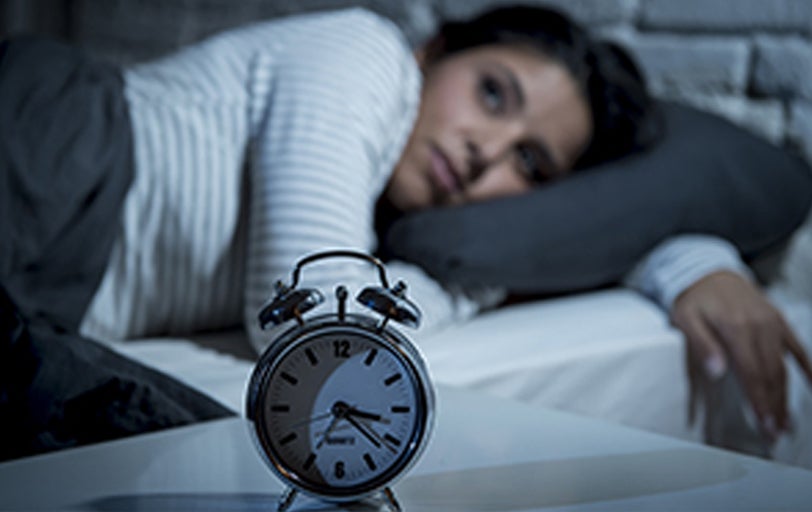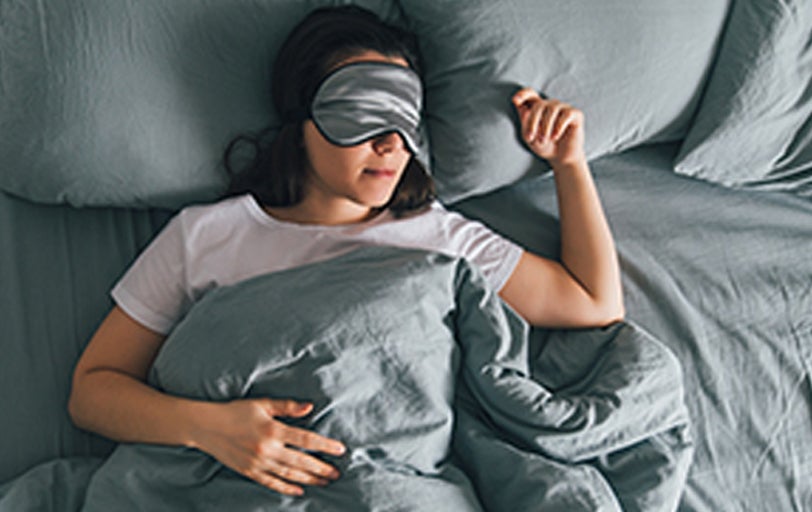In other words, people want to know how to sleep better, and they’re prepared to make changes to do so.
Nevertheless, sleep medicine is still a comparatively young field in academia, so how do we combat a low quality of sleep and reclaim the night as a time of peaceful rest?
There’s a lot of advice out there about sleep, but is it all good advice? I hate to be the bearer of bad news, but the answer is a definitive “no.” The statistics don’t lie—what we’re doing to try and fix our sleep just isn’t working.
“Hygiene.” The word itself is associated with guilt that’s been ingrained in us from an early age. We consider “unhygienic” to be inherently bad, synonymous with being dirty. The idea of sleep hygiene—maintaining a “proper” way to sleep—does little more than kick off the concept of sleep improvements with a morality game.

There are a lot of rules here, but even the most “hygienic” sleeper probably hasn’t solved the fundamental problems of their relationship with sleep—a disconnection from nature, a confused circadian rhythm, and self-created jet lag. Plus, I’ll be frank. These sleep hygiene tactics just aren’t effective.
I probably don’t have to tell you that we live in a society driven by pharmaceuticals. If you’ve got a problem, there’s a supplement for it—guaranteed! Despite their popularity, these pills aren’t going to do you much good. Not only are they often ineffective, but medications frequently used for help with sleep are expensive and sometimes dangerous, too.
So, if sleep hygiene and pharmaceutical sleep aids miss the point, where should we look? Often, the best sleep remedies are all-natural, and they start with something called “chronobiology,” which isn’t nearly as frightening as it sounds.
UC San Diego’s Center for Circadian Biology defines chronobiology as “the biology of time and internal biological clocks.” These internal clocks include everything from puberty to menopause (and other aging indicators), but it’s the circadian rhythms that are most closely related to sleep.
Light delivers the most significant impacts on our circadian clock. Our eyes are connected to our suprachiasmatic nucleus, which is the master clock in our brain. Light controls this master clock by influencing the release of hormones (melatonin from the brain’s pineal gland at night and cortisol from the adrenal glands during the day) while also governing when we tend to grow sleepy at night and wake up each morning.
Daylight (and the lack of it) shifts our hormonal concentrations throughout a 24-hour day. Night owls, shift workers, or other irregular sleepers out of touch with the sunlight will quickly find themselves with an imbalance of both cortisol and melatonin, which will impair sleep quality and overall health.
Since light (and the lack of it) does so much to regulate our sleep, let’s use it instead of relying on expensive supplements and sleep hygiene tips that don’t work. Below, I’ve listed ten ways we can do just that, adjusting our behaviors and sleep tactics toward what nature intended and using both light and darkness to our advantage.

1. Morning Sunlight
Sunrise is nature’s way of saying, “Hey! Wake up! It’s light outside! Embrace your day!” You might as well listen—no, really listen! Rising with the sun each day will standardize your waking time and signal your body to produce those hormones that keep you awake, active, and in a good mood.
And, if rising with the sun is not in the cards right now, stepping outside in the sunlight for even just 10 or 20 minutes each day at the start of your day can make a huge difference.
Americans spend roughly 90% of their lives indoors, replacing the natural sunlight necessary for our circadian regulation with human-made products—phone screens, televisions, fluorescent and incandescent lights, and other artificial lighting that wreaks havoc on our biological clocks.
Unlike these artificial bright lights, the sun is reliable. Its consistency can do wonders to treat our biological clocks with care. All we need to do is step outside and routinely see the sunlight.
2. Evening Sunset
Similarly, we can use sunset as another prompt to adjust our behaviors. At sunset, shift your emphasis from embracing the light to embracing the darkness (or at least lower-level lights—but more on that in a moment).
Luckily for us, the sunset is just as reliable as the sunrise; there’s a lot to be said for consistency when it comes to sleep, so link up to it!
Applications like Lux can help keep you in tune with the day’s natural sunlight (customized to your location) by offering countdowns and alerts prior to both sunrise and sunset.
If you’re not convinced and think you must be getting enough sunlight via an open window or while you’re commuting to work in your car, think again. Dr. Satchin Panda of the Salk Institute has developed an app called myLuxRecorder, which measures in real-time the levels of light energy (called “lux”) in different environments. You’ll be surprised by the lack of light that makes it indoors!
Just as easily as we can use light to our advantage, so too we can utilize darkness by minimizing sleep-disrupting lights in the hours between sunset and bedtime. By reducing our exposure to light during this period, we signal to our bodies that it’s time to wind down and enter a more restful phase.
3. Red Light Sources
Interestingly, red wavelengths of light are the most conducive for sleep. For example, one study found that red light positively affected sleep quality in a group of 20 female athletes.
Once the sun has set and you’re winding down for the night, implement red light sources in your home. Some brands are manufacturing red lightbulbs for this purpose, but a leftover string of red holiday lights will do the trick, too!
You might also want to check out red color filters for smartphones. This hidden feature of the iPhone tints the entire screen red, which is even more effective than night mode.
4. Candles or Fire

For an ultra-natural (and relaxing) way to set the mood for sleep, you may prefer lighting some candles or tending to a fire in the winter. Why? You guessed it—because the light emitted by low-heat flames is the same red light linked to better sleep quality.
5. Hot Bath or Sauna
Create an evening ritual that raises your temperature to lower it. It sounds counterintuitive since evenings are about supporting lowering core body temperature--that’s what happens when the ambient temperature goes down. Surprisingly, a hot bath or infrared sauna before bed can result in lowering our overall core body temperature after the fact. By bringing that heat up to the surface of our skin, it surprisingly can result in lowering overall core body temperature after we cool down. Give yourself time to cool down after your bath or sauna and get the happy benefits of an even lower core body temperature than without that.
6. Blue Blockers
If you absolutely must interact with blue light sources (think computers, televisions, and phone screens) at night, avoid their disruption of natural darkness by utilizing blue light blockers. Harvard Health Publishing suggests wearing glasses that block blue light or installing computer and phone apps that filter out blue and green wavelengths.
Blue blocking glasses come in a variety of flavors. Orange and red lenses are great for promoting nighttime sleepiness despite the presence of blue-lit computer screens.
If glasses aren’t your thing, give Iris a shot. This program is only $15 for a lifetime license, and it’s one of the best blue light filtering programs out there. Using red light or blue filters might seem strange at first, but you’ll get used to it—I have, and my body has thanked me.
7. Aim for Dim-to-Dark
Thanks to browser extensions such as Dark Reader, it seems the tech world is slowly beginning to get on board with the promotion of darkness in the evenings. However, the less light (even red light or screens in dark mode), the better. If possible, aim for dim to darkness once the sun has set to avoid confusing your body’s biological clock.
8. Blackness
Until bedtime, I’ve been encouraging you to aim for dimness; once it’s time to go to sleep, aim for complete blackness. Even dim lights such as nightlights or disruption from outdoor streetlamps can have a huge impact on how your body produces melatonin and maintains your circadian rhythm.
9. Travel Resources

No matter how glorious your dark, restful bedroom may be, there are going to be some times when you’re forced away. This doesn’t mean that you can’t continue to take control of your sleep! Bring along a sleep mask and a reading lamp with a red light.
If you’re traveling across time zones, Timeshifter is an essential flight companion. This app offers an hourly summary of how you can adjust your behavior and environment to keep in tune with the sun’s path regardless of the changes happening around you.
10. Don’t Settle
Achieving complete darkness in your bedroom can be a challenge, but don’t settle for “dark enough.” Even the smallest amounts of light can disrupt our sleep quality, so keep up the fight and troubleshoot until your bedroom is outfitted for the best night’s rest. If one set of blackout curtains doesn’t work, try another! Continue to adjust your habits as necessary.
Just don’t give up.
Solving our sleep deprivation crisis may not be easy, but I’m willing to argue that the concepts behind a sleep revolution are simple. It’s all about reconnecting to the rhythms that nature offers us, such as utilizing light and darkness. These rhythms exist for a reason, and embracing them is the best thing we can do to improve our sleep.



